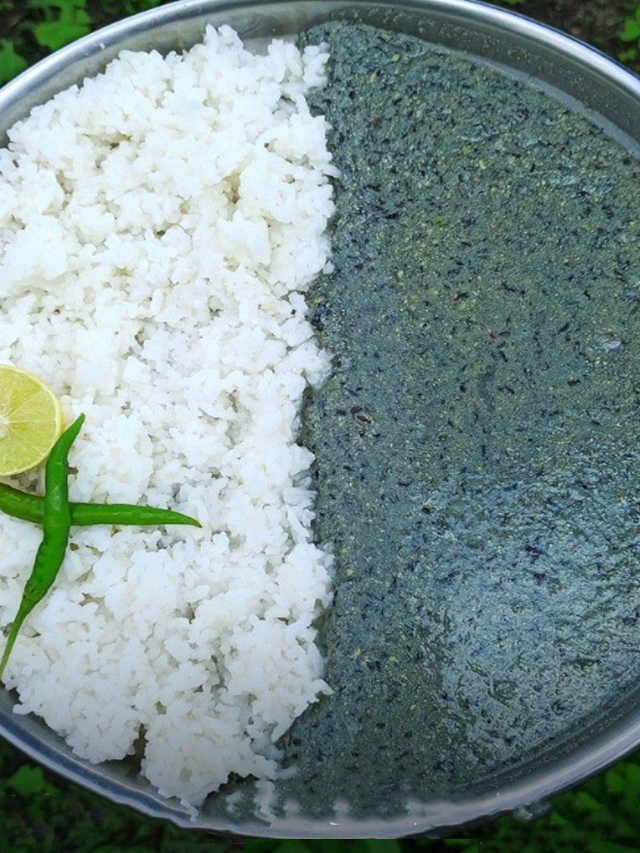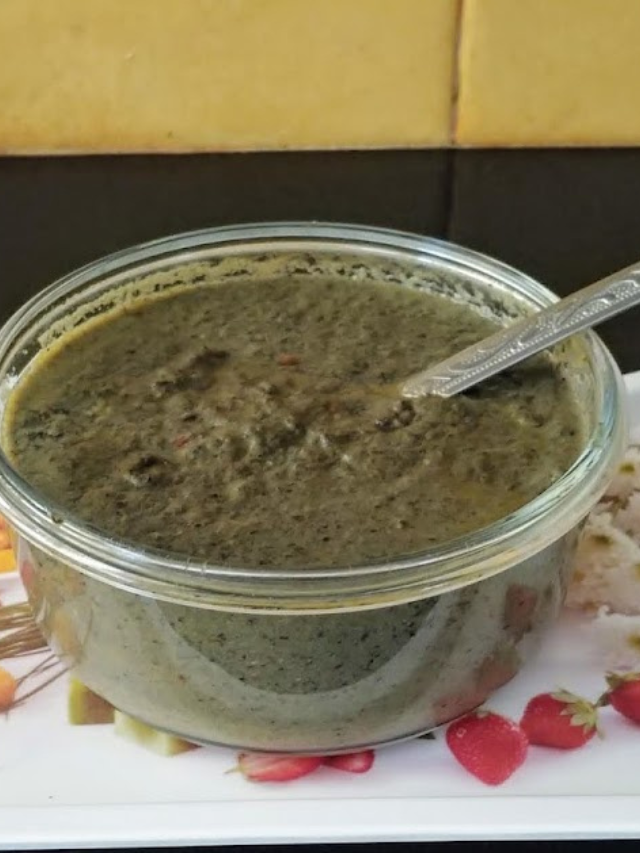As winter arrives and the air turns cold, few things are as comforting as a warm, hearty meal. If you love traditional Indian food, Dubuk is a dish you’ll want to try. This flavorful lentil-based curry comes from the Kumaon Region of Uttarakhand and is both healthy and tasty. In this blog, we’ll walk you through the steps to make Dubuk, so you can enjoy this perfect winter recipe at home.

What is Dubuk?
Dubuk is a traditional winter dish from Kumaon, a region in Uttarakhand known for its rich culture and unique food. It is mainly prepared using local pulses like bhatt (black soybeans) or gahat (horse gram), cooked in a thick, flavorful broth.
The dish has a simple, earthy taste that sets it apart in Indian regional cuisine. Served hot with rice or chapati, Dubuk is not only delicious but also provides warmth and nourishment during the cold months.
The name “Dubuk” likely comes from the word “dubna,” which means “to sink,” possibly referring to how the ingredients settle in the pot during cooking.
Ingredients for Dubuk
To make authentic Dubuk, you’ll need the following ingredients:
- Bhatt (Black Soybeans) or Gahat (Horse Gram) – 1 cup (choose either, depending on availability)
- Rice flour – 2 tablespoons (to thicken the gravy)
- Mustard oil – 2 tablespoons
- Cumin seeds (jeera) – 1 teaspoon
- Garlic – 5-6 cloves (finely chopped)
- Turmeric powder (haldi) – ½ teaspoon
- Asafoetida (hing) – a pinch
- Green chilies – 2 (slit lengthwise)
- Water – 4 cups
- Salt – to taste
- Fresh coriander leaves – for garnishing
Optional Ingredients
- Grated ginger – ½ teaspoon (adds an extra layer of flavor and warmth)
- Red chili powder – ¼ teaspoon (if you like it spicy)
- Curry leaves – a few (for tempering)
Step-by-Step Dubuk Recipe

Step 1: Soak the Pulses
Begin by soaking bhatt (black soybeans) or gahat (horse gram) in water for 6-8 hours, or overnight. This softens the pulses, making them easier to cook and digest.
Step 2: Prepare the Rice Flour Paste
In a bowl, mix rice flour with a little water until it forms a smooth paste. Ensure no lumps remain, as this will thicken the Dubuk later.
Step 3: Cook the Pulses
Drain the soaked pulses and place them in a heavy-bottomed pan or pressure cooker. Add 4 cups of water, a pinch of turmeric, and salt. If using a pressure cooker, cook for 4-5 whistles until the pulses are tender. If using a regular pot, simmer on medium heat for 30-40 minutes until fully cooked.
Step 4: Make the Tempering (Tadka)
In a separate pan, heat mustard oil until it smokes slightly. Reduce the heat and add cumin seeds, allowing them to splutter. Then, add chopped garlic, green chilies, and a pinch of asafoetida (hing). Fry the garlic until it becomes golden brown and fragrant. Grated ginger can also be added for extra warmth.
Step 5: Combine the Pulses and Tempering
Once the tempering is ready, mix it into the cooked pulses. Stir well to blend the flavors.
Step 6: Thicken the Gravy
Gradually add the rice flour paste to the pot while stirring continuously to avoid lumps. The rice flour will help thicken the Dubuk to a rich, gravy-like consistency. Let it simmer for 10-15 minutes on low heat until the gravy thickens. Stir occasionally to prevent sticking at the bottom.
Step 7: Adjust Seasoning and Garnish
Check for salt and adjust the seasoning according to taste. Finally, garnish your Dubuk with freshly chopped coriander leaves for a burst of freshness and color.
Step 8: Serve Hot
Serve Dubuk hot with steamed rice or chapatis. The hearty taste of the lentils and the warmth of the spices make it perfect for cold evenings.
Tips to Make the Perfect Dubuk
- Use fresh ingredients: The key to a flavorful Dubuk is fresh garlic, green chilies, and spices. Fresh ingredients bring out the authentic flavors of this dish.
- Don’t rush the cooking: Allow the pulses to cook thoroughly to get a melt-in-your-mouth texture. If you’re using a pressure cooker, don’t overdo the whistles as the pulses can turn mushy.
- Adjust the consistency: The thickness of Dubuk can be adjusted by adding more or less rice flour paste. Some people prefer a soup-like consistency, while others like it thicker.
Final Thought
Dubuk is more than just a meal; it’s a comforting and nourishing dish that comes straight from the heart of Kumaon. Its simplicity, healthy ingredients, and warmth make it an ideal recipe for winter. Whether you’re familiar with Kumaoni cuisine or looking to try something new, this dish is sure to impress.
This winter, make Dubuk at home and enjoy the rich flavors and warmth of this traditional Kumaoni delicacy.
FAQ’s
What is Dubuk?
Dubuk is a traditional Kumaoni dish made with pulses like bhatt (black soybeans) or gahat (horse gram) and a thick rice flour gravy. It is commonly enjoyed during the winter months.
Can I add vegetables to Dubuk?
Yes, you can add vegetables like spinach, carrots, or peas to make a nutritious Vegetable Dubuk.
Is Dubuk healthy?
Yes, Dubuk is packed with protein, fiber, and essential nutrients from urad dal flour and other ingredients, making it a nutritious meal.
Can I make Dubuk without a pressure cooker?
Yes, Dubuk can be made in a regular pot. It may take longer, about 30-40 minutes, to cook the pulses until tender.
Can I store leftover Dubuk?
Yes, you can store leftover Dubuk in the refrigerator for up to 2 days. Reheat it gently on the stove before serving.

